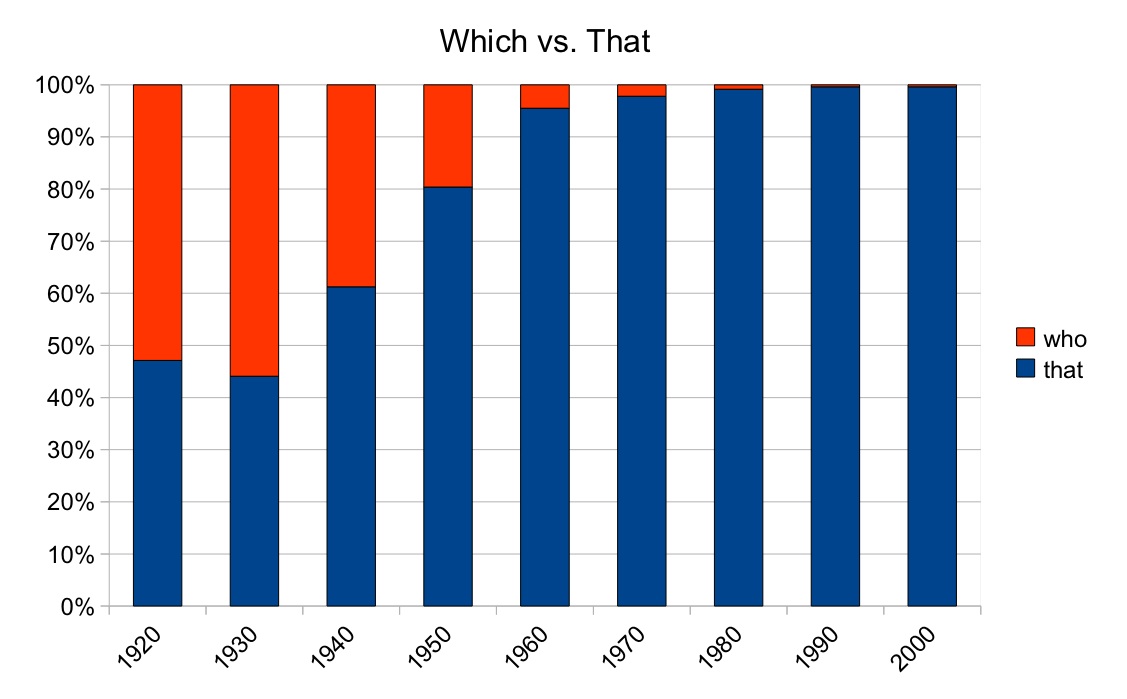
These relative pronouns are pervasive in our daily lives, with specific guidlines as to when we should be using which. The general prescriptive rule goes like this: "Who" is reserved for people in both restrictive (essential) clauses and nonrestrictive (nonessential) clauses. "That" is used for restrictive clauses, whereas "which" is used for nonrestrictive clauses, but both are for non-persons. Nonrestrictive clauses are to be separated by commas. We'll take a look at how this rule is followed.
Examples:To see how people followed this, I looked in COHA and Time for a historical perspective, BNC for a dialectal perspective, and COCA for a contemporary perspective. I primarily searched for phrases with a structure of "[article] [noun] [relative pronoun] [verb]". Below are some of the searches:
| COHA | Time | BNC | COCA | |
|---|---|---|---|---|
| Who | Chart List |
Chart List |
Chart List |
Chart List |
| That | Chart List |
Chart List |
Chart List |
Chart List |
| Which | Chart List |
Chart List |
Chart List |
Chart List |
The usage of "who" throughout the corpora and over the years is exclusively consistent with the rule, with every single one of the first 100 results matching. However, "that" and "which" have not always conformed to the statements above. It appears the rule was either based on a whim or else was developed in observation of its current usage. At the inception of TIME Magazine, over 50% of the time "which" was used, but rapidly fell prey to "that" by the 1970s (see below). We can also see in COCA that the construction exists but continues to drop three times in just the last 20 years, and that across the genres it appears to be most popular in academic writing. Perhaps this is an indicator of the formal stigma "which" is receiving rather than the conformity of people to the rules. Whatever the case, people seem to be foregoing "which".

The appropriate usage of "which" per the rules requires a comma after prior to "which" (e.g. "[article] [noun] , [which] [verb]"). In TIME we see a slight increase of this grammatical syntax and in COHA a flat usage. It thus seems that this usage is consistent as well and the ambiguity only exists with restrictive clauses.